Reduce delays, cut losses, and gain full field-to-bin and bin-to-sale visibility with harvest management software built for fast, high-stakes decision-making.
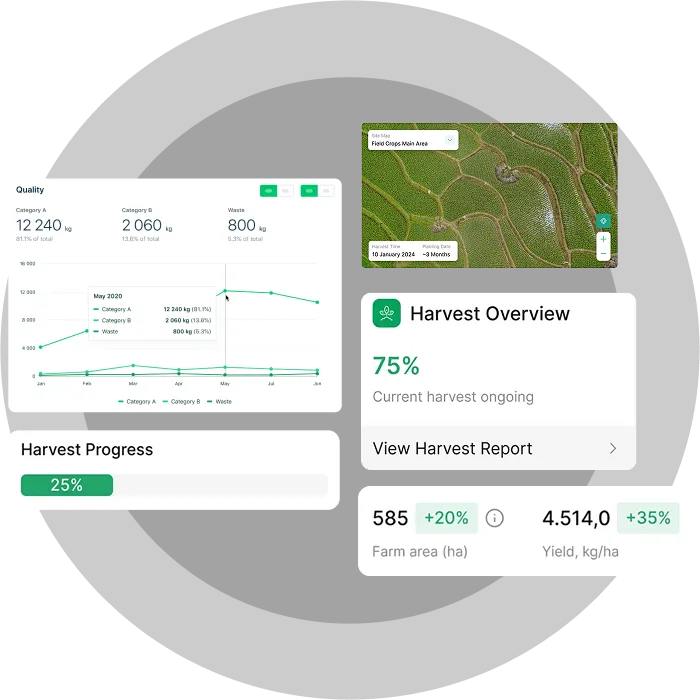



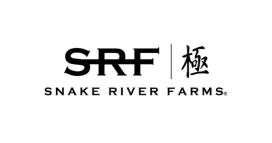

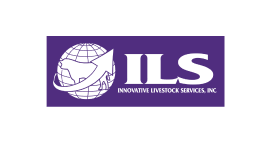


Explore real use cases where farm harvest management brings better timing, coordination, and control to every stage.
View live field harvest updates across blocks, crews, and machines to avoid inefficiencies and missed deadlines.
Analyze per-hour productivity of crews and machines to reduce fuel waste and increase harvest throughput
Use live crop moisture data to trigger drying or reroute to appropriate storage to prevent spoilage.
Capture harvest load details at the field edge for traceability and grading-based downstream handling.
Automatically map each batch to plot, crew, and storage location for audit-ready traceability records.
Log harvest team certifications, hygiene checks, and timestamps to support organic/export protocol compliance.
Allocate input usage costs directly to plots to analyze profitability.
Align harvests to buyer specifications or contract terms to optimize dispatch and avoid rework.
Link field harvest data to logistics, reducing loading delays and improving field-to-facility coordination.
Manage harvesting across multiple farms with transparent yield records and fair member-level performance insights.
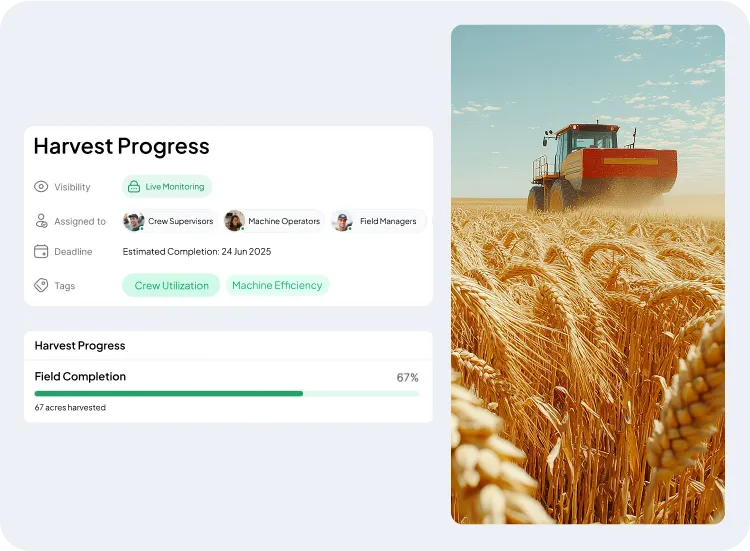
From load-level visibility to task-level control, every feature of harvest management software helps eliminate downtime and decision lag.
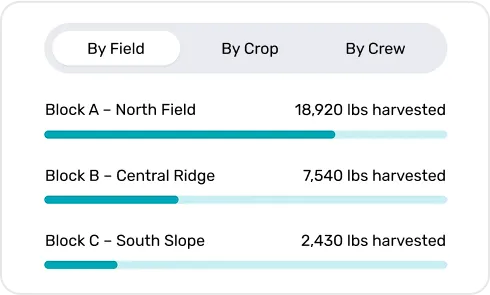
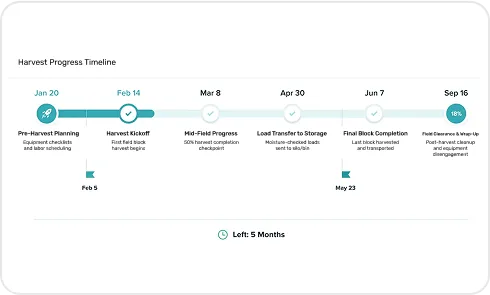
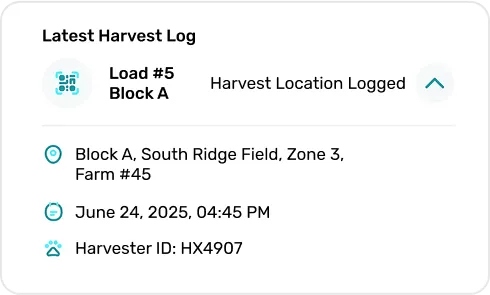
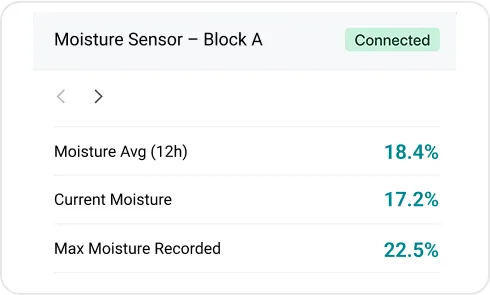
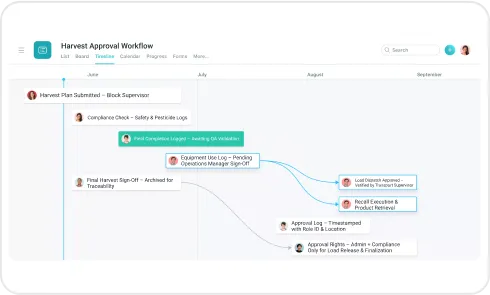
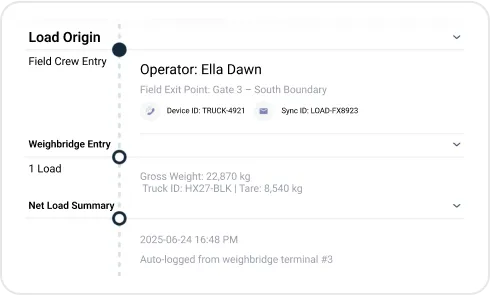
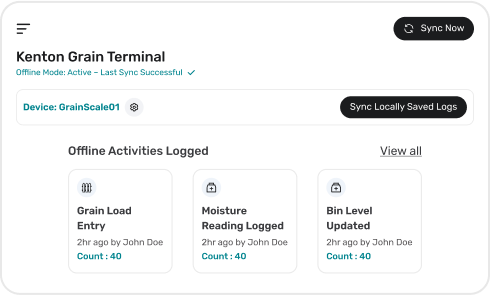
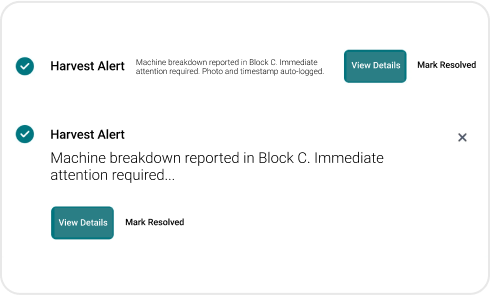
Book a consultation to fix breakdowns in timing, tracking, and yield visibility,
before it hits your margins.
Harvest management software brings order, insight, and accountability to each post-cut stage your team handles.
Plan and execute harvests with precision, ensuring every block is cut on time with optimal crew and equipment use.
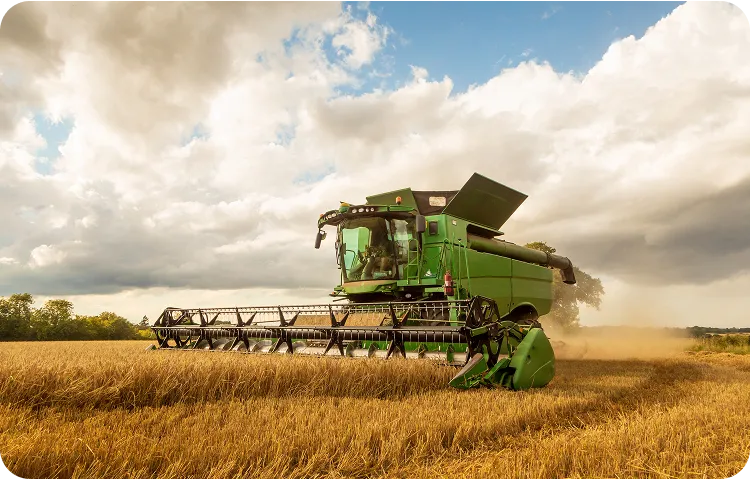
Track machine performance and grain separation in real time to minimize losses and maintain throughput.
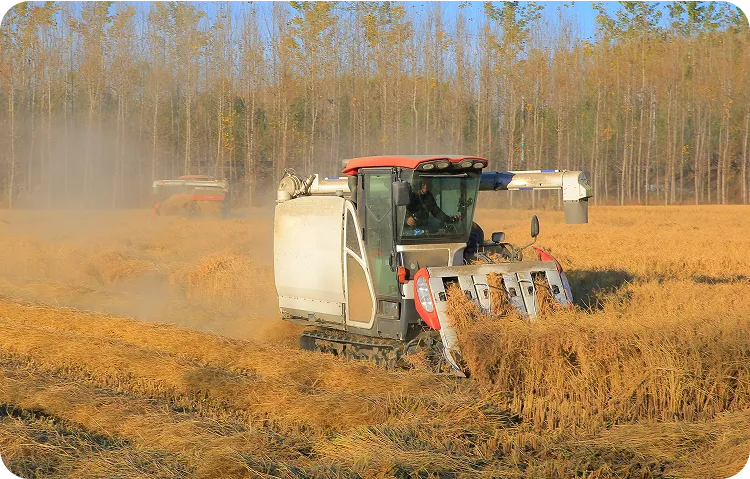
Make accurate, moisture-driven drying decisions that protect grain quality and reduce energy waste.

Preserve harvest integrity by managing bin-level storage conditions, inventory, and expiry forecasts with complete traceability.
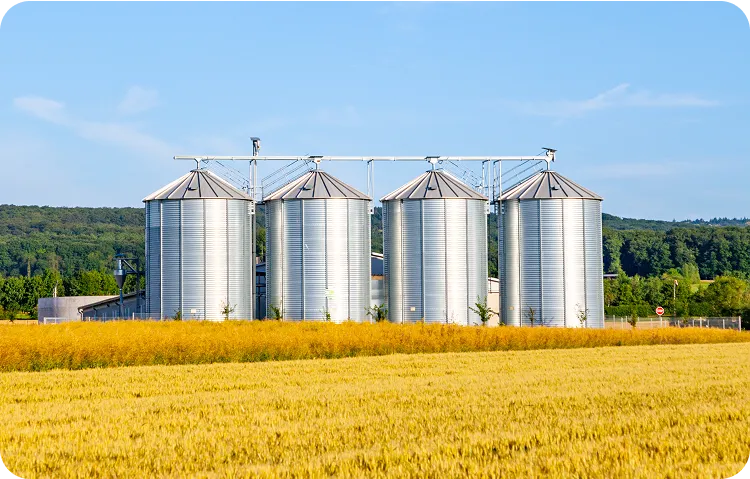
Run early-stage cleaning, milling, and grading operations with data on output quality, equipment efficiency, and operator trends.
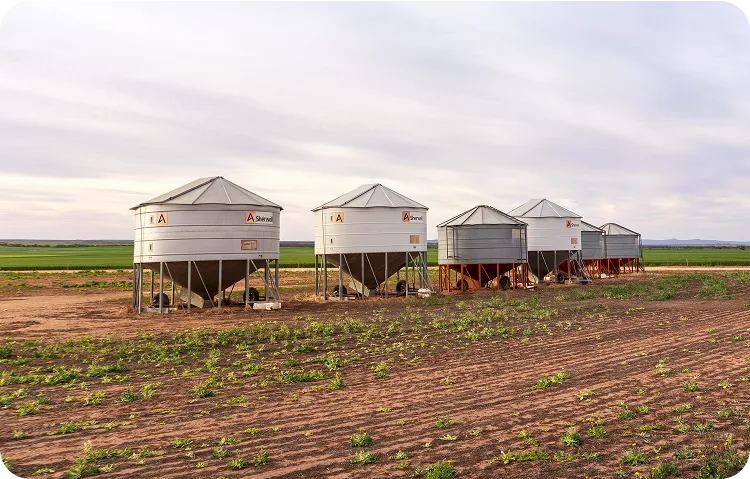
Oversee value-added processing steps with batch-level control over recipes, compliance, and production yields.
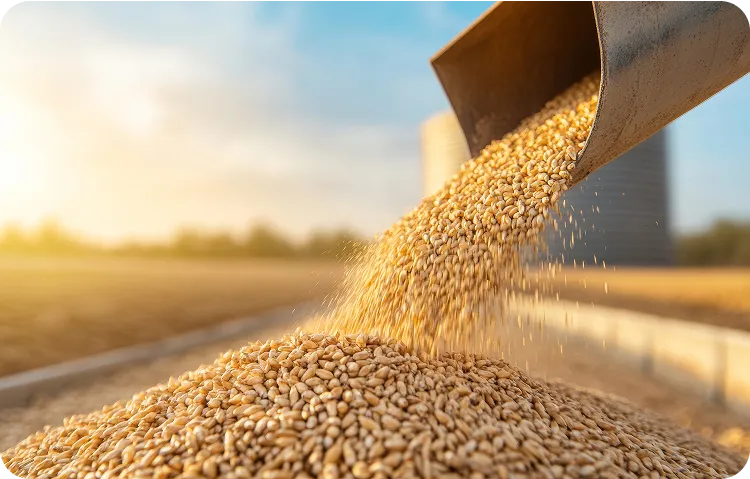
Control every package that leaves your operation, by weight, label, buyer spec, and source batch.
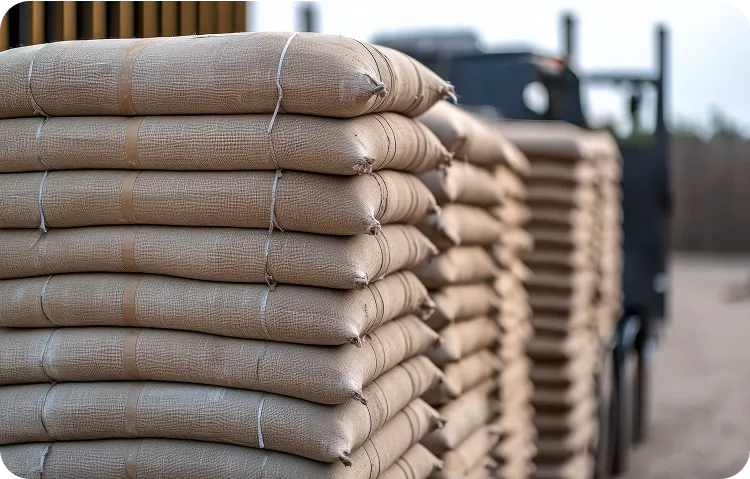
Connect harvest-ready inventory with demand signals, contracts, and buyer profiles for better pricing and placement.
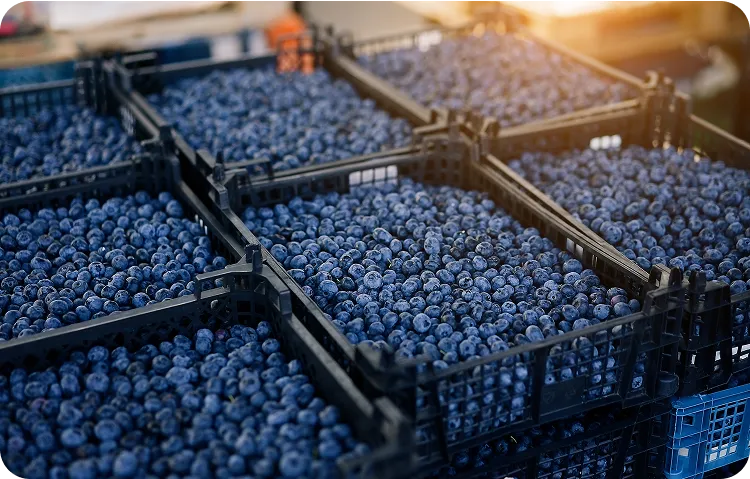
From row crops to specialty produce, manage harvest workflows designed to your farm’s exact crop profile.
Track yield, moisture, and machine data across acres to maximize grain quality and harvest timing.
Coordinate labor, monitor ripeness, and log batch-level output for fast-moving, high-perishability harvests.
Manage block-level picking, ripeness thresholds, and cold chain transfer from field bins to storage.
Monitor shaker passes, drying windows, and bin traceability for quality, compliance, and contract alignment.
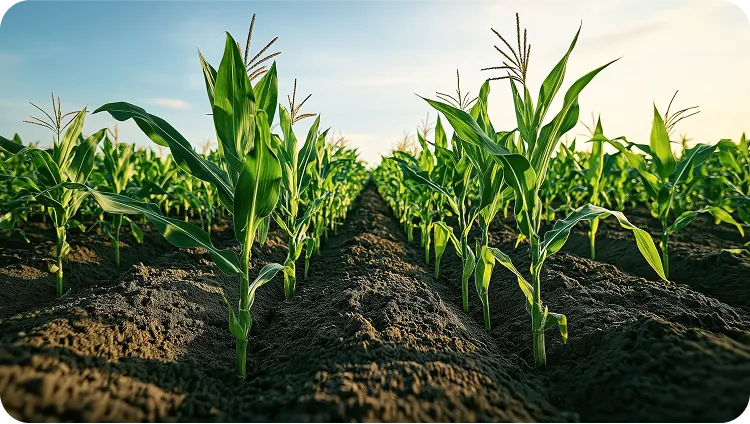
Purpose-designed for harvest operations, this solution connects teams, tracks inventory, and delivers real-time insights from field to dispatch.
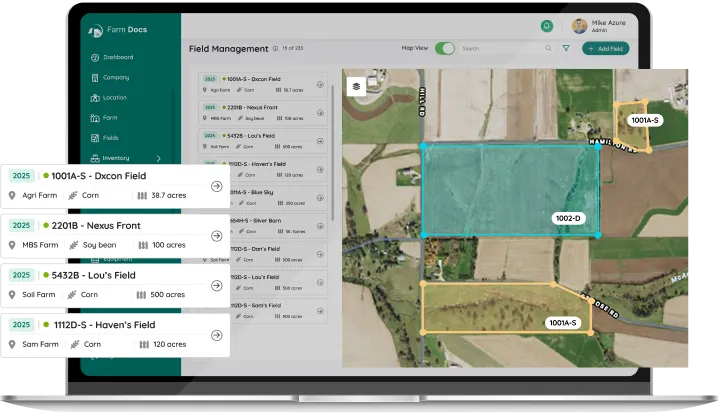



Read what our clients say about their experiences and the difference our solutions have made for them.
Vice President Information Technology
VP of Operations
IT Project Manager
Systems Administrator
Product Manager
Harvest Management Software manages harvest-specific operations like yield tracking, harvest crew coordination, truck dispatch, and grain quality logging. Unlike full Farm Management Systems (FMS), which cover the entire crop cycle, from input planning to financial reporting, harvest software focuses solely on optimizing harvest workflows and data. It offers higher resolution tracking of harvest timing, lot-level inventory, and equipment utilization without the complexity of unrelated modules.
An example of post-harvest management is moisture-based drying followed by temperature-controlled storage and batch-level traceability to reduce spoilage and meet buyer standards.
The post-harvest sequence typically includes harvesting, threshing, drying, storing, primary processing, quality grading, packaging, and finally, transport or marketing.
An effective harvest management system should include modules for:
The software uses real-time location data, harvest priority, machine capacity, and fuel efficiency to suggest the best route and equipment assignment for each field. It can auto-dispatch available combines, trucks, or carts to the next optimal location based on proximity, crop readiness, and progress. This helps reduce idle time, overlaps, and unnecessary transport between fields.
Yield data is typically captured through integrated onboard sensors, yield monitors, or operator input via mobile apps. These records are tagged by field, date, operator, and crop. When working offline, the system stores data locally and syncs it to the cloud automatically once connectivity is restored, ensuring central dashboards always reflect the most current information.
Yes. Quality metrics such as grain moisture, protein levels, and test weight can be manually entered or pulled from integrated grain cart sensors and handheld devices. The software ties these quality readings to specific harvest lots or fields, enabling traceability, lot comparison, and quality-based inventory sorting before sale or storage.
Operators can continue logging yields, lot tags, equipment activity, and transfer records without an internet connection. The data is securely stored on the device, preserving timestamps and field locations. Once the operator returns to a coverage zone, the system automatically syncs records to the central platform, ensuring no loss of data or visibility.
Post-harvest analytics typically include yield per field or lot, operator efficiency, equipment run hours, fuel use, and downtime tracking. Many platforms also allow cross-field comparison to evaluate crop performance, equipment utilization, and logistical delays. These insights help optimize next season’s harvest planning and validate return on equipment and labor investments.
Our harvest software often supports integration with systems like ERP or accounting tools like NetSuite or QuickBooks. This enables a seamless flow of operational data into financial, compliance, and marketing systems, reducing manual data entry and improving reporting accuracy.
Harvest software platforms ensure data security through encrypted cloud backups, automatic syncing, and detailed access controls. Users can be granted role-specific permissions (e.g., operator, manager, read-only), and all edits or deletions are logged in the system’s audit trail. This protects critical harvest data while supporting compliance and operational integrity.
Yes. The software tracks harvest dates, lot origins, grain quality, and transfer logs, providing an auditable trail for contract delivery terms or regulatory reviews. For certified growers or buyers requiring traceability (e.g., non-GMO, organic, food-grade), the platform ensures lot-level documentation from field to delivery.
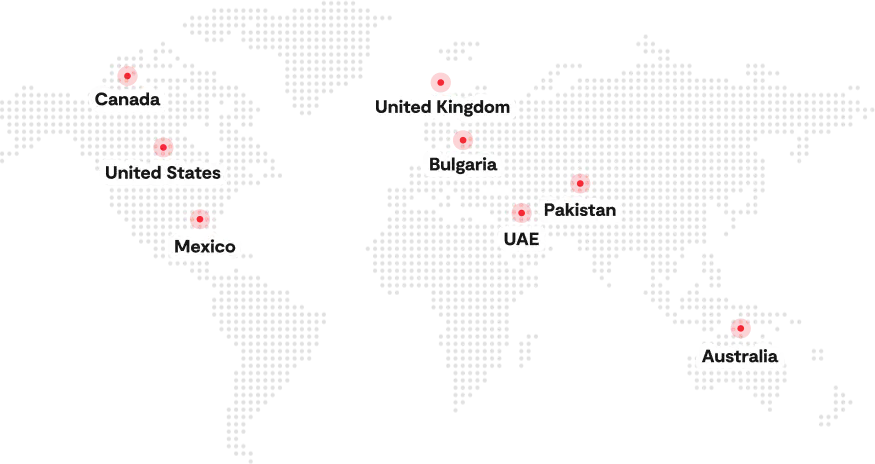
160 Bovet Road, Suite # 101, San Mateo, CA 94402 USA
6701 Koll Center Parkway, #250 Pleasanton, CA 94566
2 – 105 Consumers DR Whitby ON L1N 1C4, Canada
49 Bacho Kiro Street, Sofia, 1000, Bulgaria
Export House, Cawsey Way, Woking, Surrey, GU21 6QX
Amado Nervo #2200 Edificio Esfera 1 piso 4 Col. Jardines del Sol CP, 45050, Zapopan, Jalisco, Mexico
C/- Prime Partners Level 4 1 James Place NORTH SYDNEY New South Wales 2060, Australia
Folio3 FZ LLC, UAE, Dubai Internet City, 1st Floor, Building Number 14, Premises 105, Dubai, UAE
Folio3 Tower, Plot 26, Block B, SMCH Society, Main Shahrah-e-Faisal, Karachi.
First Floor, Blue Mall 8-R, MM Alam Road Gulberg III, Lahore
Corporate 7 by Maaksons, Executive Block, Civic Center 1, Gulberg Green, Islamabad
© 2026 Folio3 Software Inc. All Rights Reserved.
Get a Free Consultation Within 24 Hours, with a No-Obligation Ballpark Estimate
Error: Contact form not found.